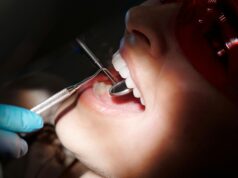Platelet-Rich Plasma (PRP) therapy is an advanced treatment option gaining momentum in the medical and cosmetic industries for its ability to harness the body’s natural healing capabilities. This cutting-edge therapy involves extracting a small amount of the patient’s blood, processing it to concentrate the platelets, and then reinjecting the enriched plasma into the targeted areas. PRP is renowned for its potential to promote repair and regeneration, and its application spans a range of medical conditions and cosmetic enhancements.
The Science Behind PRP Therapy
At the core of PRP therapy is the concept of regenerative medicine. Platelets, a component of blood typically associated with clotting, also contain growth factors that trigger cell proliferation and tissue repair. When injected into an area of injury or wear, these platelets accelerate the body’s own healing processes, making PRP a natural and appealing treatment option.
Applications of PRP in Medicine
One of the most common medical applications of PRP is in the treatment of musculoskeletal injuries. Many professional athletes and active individuals turn to PRP therapy for issues such as tendonitis, ligament sprains, or joint injuries. Studies indicate that PRP can enhance the healing of injured tissues, reduce pain, and improve joint function. For instance, patients with chronic conditions like osteoarthritis may experience relief as PRP injections stimulate cartilage repair and decrease joint inflammation.
PRP is also utilized in dermatology, particularly for hair restoration. Patients experiencing hair thinning or pattern baldness may benefit from PRP injections into the scalp, promoting hair growth and thickness. The growth factors present in PRP stimulate inactive hair follicles, which can lead to increased hair volume and density over time.
Beyond its medical applications, PRP has made significant inroads in the realm of cosmetic treatments, notably in facial rejuvenation. The well-known “vampire facial,” which combines microneedling with PRP, is popular for its ability to improve skin texture, tone, and overall appearance. The process involves creating controlled micro-injuries to the skin, followed by the application of PRP, which enhances collagen production and fosters vibrant, youthful-looking skin.
PRP is also employed to address signs of aging such as fine lines and wrinkles. Patients opting for these treatments appreciate PRP’s natural approach, using their own biological material to stimulate skin regeneration without the need for synthetic fillers or chemicals.
Safety and Considerations
PRP treatments are generally considered safe since they employ the patient’s own blood, minimizing the risk of allergic reactions or transmission of diseases. However, as with any medical procedure, it is crucial to consult with a qualified healthcare provider to determine suitability based on individual health needs and conditions.
Why PRP?
The appeal of PRP therapy lies in its ability to tap into the body’s intrinsic healing mechanisms without the need for pharmaceuticals or invasive surgery. Though not a panacea, it offers promising results across various conditions and aesthetic desires. As research continues to advance, the scope of PRP applications is likely to expand, offering even more opportunities for natural healing and rejuvenation.
In conclusion, Platelet-Rich Plasma therapy is a versatile and innovative treatment option with the potential to treat a myriad of conditions, from sports injuries to hair loss and skin aging. Its efficacy is continually being supported by emerging studies, making it an exciting frontier in both medical and aesthetic treatments. As with any procedure, those interested should seek advice from experienced practitioners to ensure the best outcomes.












